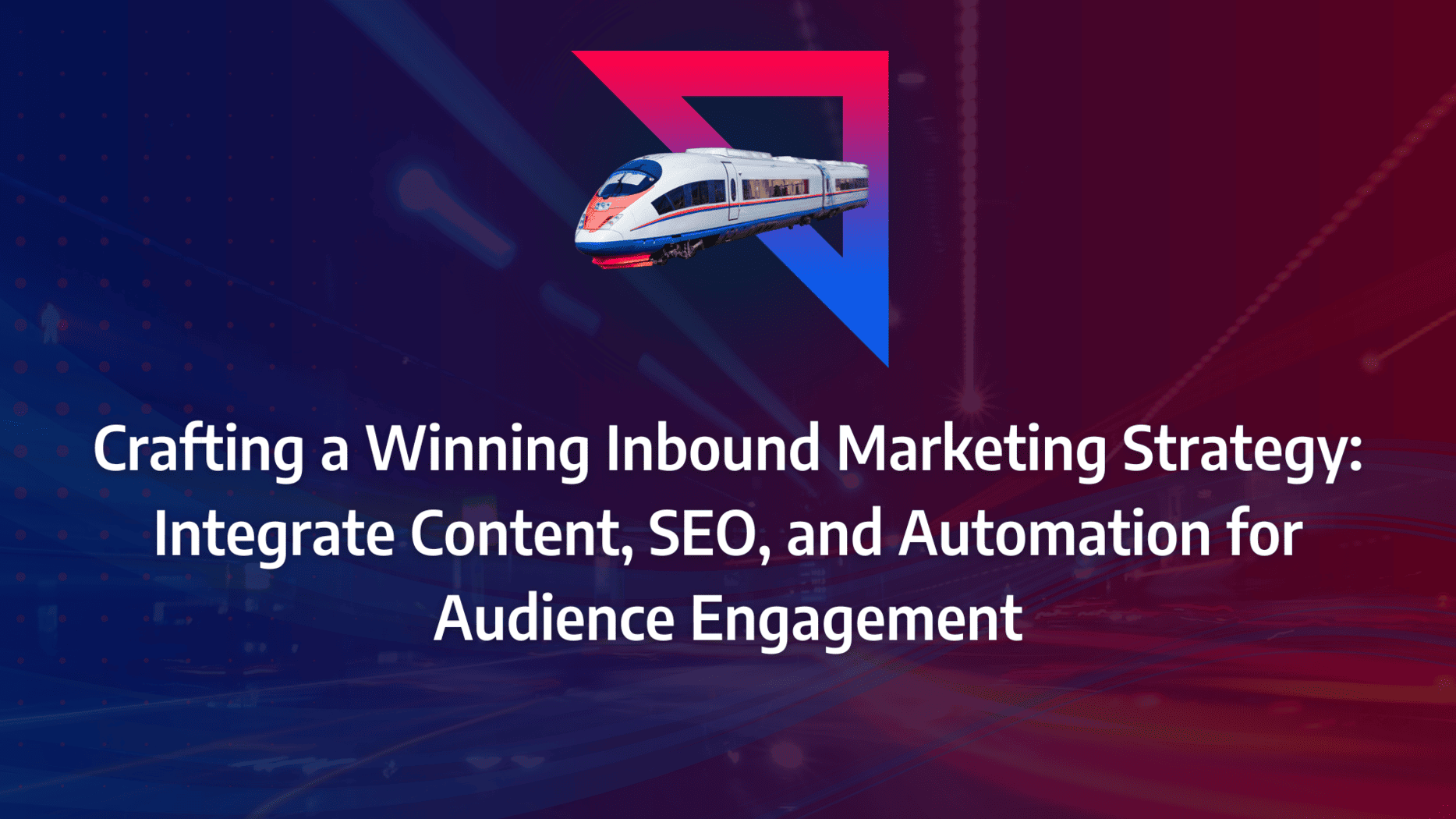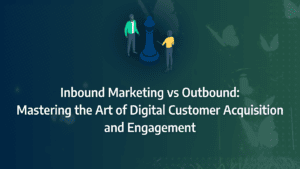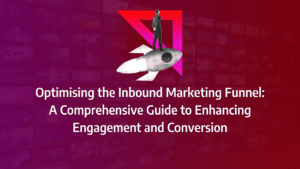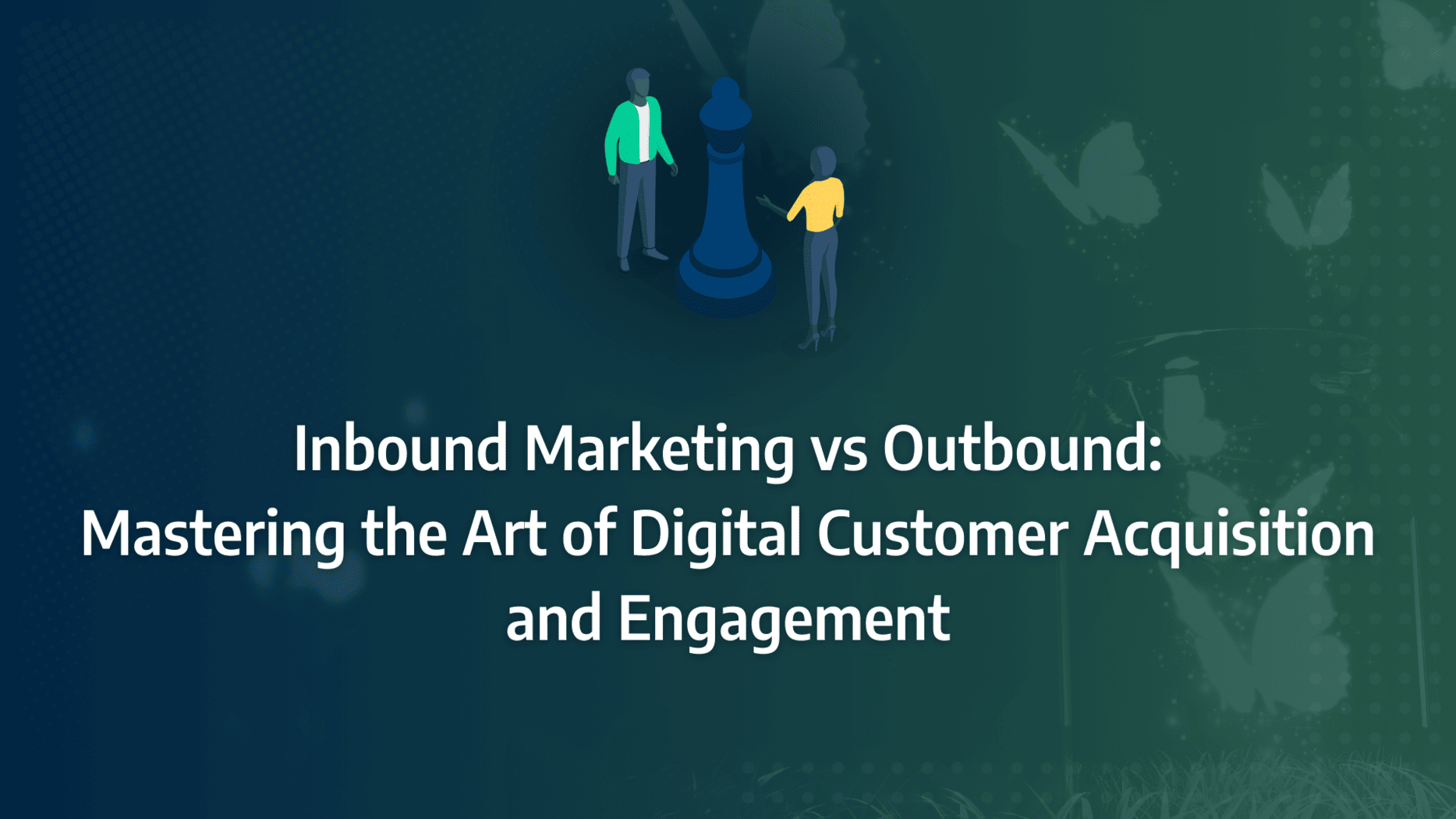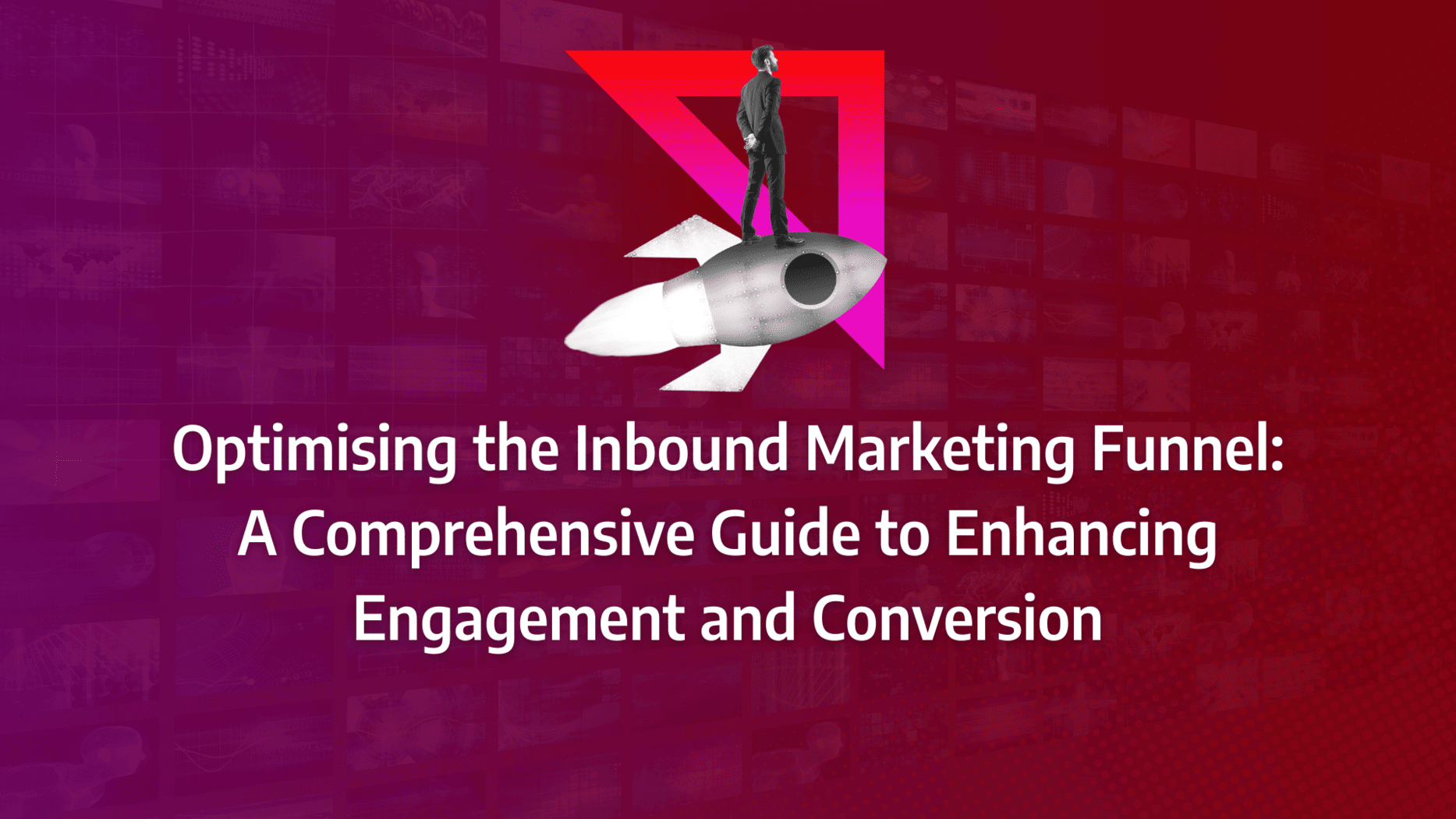Crafting an inbound marketing strategy that truly resonates with your audience requires more than just a single approach. It demands a harmonious blend of content creation, SEO optimisation, and marketing automation. But how do you ensure that these elements work together seamlessly to engage your audience and drive conversions?
This guide takes you through a step-by-step process to build an inbound marketing strategy that not only attracts potential customers but also nurtures them through the entire buyer’s journey. From understanding your audience and setting clear goals to leveraging data-driven insights and automation tools, we’ll walk you through every crucial step. Ready to transform your marketing efforts? Let’s dive into the strategy that will set you apart from the competition.
- Begin by thoroughly understanding your target audience and defining detailed buyer personas to guide your inbound marketing efforts.
- Create content that directly addresses your audience’s pain points, ensuring it’s valuable, relevant, and optimised for search engines.
- Integrate SEO into your content strategy to enhance visibility and drive organic traffic to your site.
- Utilise marketing automation tools to streamline campaigns, improve lead nurturing, and personalise customer interactions.
- Continuously monitor and analyse campaign data to refine your strategy, ensuring consistent improvement and better engagement over time.
- Align your content with different stages of the buyer’s journey to effectively guide prospects from awareness to decision-making.
- Implement a holistic approach that synchronises content, SEO, and automation for a more cohesive and effective inbound marketing strategy.
- Leverage real-world examples and case studies to inspire and inform your inbound marketing practices.
What is an Inbound Marketing Strategy?
An inbound marketing strategy involves creating various types of content such as blog posts, social media updates, webinars, e-books, newsletters, and SEO-focused materials. This approach aims to generate, nurture, and retain leads by offering content tailored to your customers’ needs, including their pain points, hobbies, and interests.
For B2B applications, an inbound marketing strategy can be segmented into four distinct stages: Attract, Convert, Close, and Delight. This structured approach ensures that your content is targeted and effective for your specific audience.
Is Inbound Marketing Effective?
Inbound marketing is highly effective and can significantly improve customer engagement, brand awareness, and the quality of your web traffic. To maximise these benefits, here are some best practices you can implement to develop an effective inbound marketing strategy.
Build Detailed Buyer Personas
Creating detailed buyer personas is essential for tailoring content to your ideal target audience. Effective buyer personas can be developed by collecting customer demographics (such as age, income, and gender) through surveys, analysing your competitors, leveraging outbound marketing analytics (including social media ads, pay-per-click ads, and web ads), and segmenting your customer base.
Follow SEO Best Practices
Identifying and implementing SEO best practices is crucial for an effective inbound marketing strategy. Improving your website’s search engine rankings can attract more leads. Enhance your SEO by boosting your website’s loading speed, incorporating internal links and backlinks, researching high-impact keywords, and conducting a content gap analysis. These strategies are foundational to a successful content-driven inbound marketing approach.

What Matters Most?
Aligning your inbound marketing efforts with the buyer’s journey is essential for addressing specific needs at every stage. From our experience, building an audience before launching products can significantly enhance your inbound lead generation capabilities. Clients typically find that creating engaging, high-quality content resonates deeply with their audience, laying a strong foundation for sustained inbound traffic and engagement.Get In Touch
What are the essential components of a successful B2B inbound marketing strategy?
A successful inbound marketing strategy is pivotal for improving customer retention, lead generation, customer loyalty, and much more. Here, we explore six critical components that can enhance your B2B inbound marketing strategy, ensuring it is robust and effective.
Content Management
Content marketing plays a significant role in various aspects, such as increasing web traffic, enhancing web traffic quality, boosting brand awareness, generating leads, improving search engine visibility, and fostering customer engagement.
Efficient Content Management: Managing and maximising your content-driven inbound marketing strategy can be achieved through several methods, including content mapping and content calendars.
- Content Mapping Strategy: This is invaluable for tailoring content to guide customers through the buyer’s journey, aligning your content with buyer personas, and identifying weaknesses in your content strategy. By mapping content effectively, you can ensure each piece serves a purpose in your broader strategy.
- Content Calendar: A content calendar helps manage and schedule your content across various channels. It involves identifying your content channels, defining your content marketing goals, and ensuring consistent, efficient, and multichannel publishing. This tool is essential for maintaining content consistency and efficiency.
SEO (Search Engine Optimisation)
SEO is a cornerstone of any inbound marketing strategy, as it enhances brand awareness, web traffic, competitive edge, and customer engagement.
Implementing SEO Best Practices:
- Improving Web Speed: Utilise tools like Dareboost, Alertra, and GTmetrix to enhance your website’s loading speed.
- Internal and External Links: Incorporate internal links and backlinks to improve site structure and authority.
- Keyword Research: Conduct thorough keyword research to identify high-volume search terms.
- Meta Descriptions: Craft informative meta descriptions to improve click-through rates.
- Content Gap Analysis: Run a content gap analysis to identify opportunities and areas for improvement.
Using tools such as ClickFlow and Google Search Console can further refine your SEO strategy, ensuring your inbound marketing techniques are optimised.
Pay-Per-Click Ads (PPC)
PPC ad campaigns are integral to a successful inbound marketing strategy. They can drive targeted traffic, complement SEO efforts, and provide measurable results.
Creating Effective PPC Campaigns:
- Identify Goals: Clearly define your inbound marketing goals.
- Optimise Landing Pages: Ensure landing pages are optimised for conversions.
- Keyword Research: Conduct thorough keyword research to maximise ad relevance.
- Call-to-Action (CTA) Buttons: Include compelling CTAs to drive conversions.
- A/B Testing: Regularly measure and optimise your ads through A/B testing.
Benefits of Aligning PPC with Inbound Marketing:
- Integration with Other Channels: PPC can enhance your overall marketing strategy.
- SEO Enhancement: PPC insights can improve SEO strategies.
- Quality Web Traffic Growth: Drive high-quality traffic to your site.
- Keyword Tracking: Monitor and optimise keyword performance.
- Cost-Per-Click Tracking: Efficiently manage your advertising budget.
Source: Hubspot
Landing Pages
Landing pages are crucial for generating leads, growing email lists, and tracking customer behaviour. They serve as the first point of interaction for many potential customers.
Creating Effective Landing Pages:
- Persuasive Headlines: Capture attention with compelling headlines.
- Visual Content: Use engaging visuals to enhance user experience.
- Contact Information: Make it easy for visitors to contact you.
- CTA Buttons: Include clear and effective CTAs.
- Mobile-Friendly Design: Ensure your landing pages are optimised for mobile devices.
Tools like Unbounce, Elementor, and Growform can help you design and implement effective landing pages, integral to your content-driven inbound marketing strategy.
Social Media
Harnessing the power of social media platforms such as Instagram, Facebook, Twitter, and LinkedIn can significantly enhance your inbound marketing strategy. Social media offers a dynamic way to engage with your target audience and generate quality leads through various inbound marketing techniques.
Generating Leads from Social Media:
- Lead Magnet Offers: Attract potential customers by offering valuable content in exchange for their contact information.
- Targeted Social Media Ads: Use precise targeting options to reach your ideal audience and drive traffic to your content.
- Social Analytics Tools: Leverage analytics to monitor engagement and optimise your social media strategy.
- Social Media CTAs: Include compelling call-to-action buttons to encourage interactions and conversions.
By integrating these content-driven inbound marketing tactics, you can effectively utilise social media to build relationships and foster engagement.
Lead Nurturing Emails
Lead nurturing emails are a crucial element of an inbound marketing strategy, designed to retain leads and cultivate long-term relationships. These emails keep your brand top-of-mind and guide prospects through the buyer’s journey.
Writing Effective Lead Nurturing Emails:
- Include Call-to-Action Buttons: Drive actions by incorporating clear and persuasive CTAs in your emails.
- Maintain Brand Consistency: Ensure your emails reflect your brand’s voice and style for a cohesive experience.
- A/B Testing: Test different elements of your emails to determine what resonates best with your audience.
- Track Email Metrics: Monitor open rates, click-through rates, and other metrics to measure email performance.
- Personalisation: Customise emails to address the specific needs and interests of your recipients.
- Segment Your Email List: Divide your email list into segments to deliver more targeted and relevant content.
- Automate Your Emails: Use email automation tools to streamline your email marketing efforts and maintain consistent communication.
Incorporating these practices into your content-driven inbound marketing approach will help you nurture leads more effectively and drive conversions.

Our Tactical Recommendations
To maximise your inbound marketing effectiveness, leveraging data analytics for continuous optimisation of your content strategy often yields impressive results. Clients frequently discover that using lead magnets, such as eBooks or webinars, can significantly convert visitors into leads and nurture them through the sales funnel. Additionally, focusing on persuasive copywriting enhances your calls to action, ultimately improving lead conversion rates.Get In Touch
What steps should I follow to build a robust inbound marketing strategy?
Creating a robust inbound marketing strategy is essential for B2B marketing success. Here are six insightful steps to help you build a comprehensive and effective strategy.
Step 1: Outline Your Inbound Marketing Goals
The first step in developing a successful inbound marketing strategy is to clearly define your marketing goals. These goals could include brand awareness, lead generation, SEO optimisation, increased web traffic, and more. Having clear objectives will guide your strategy and ensure all efforts are aligned with your business goals.
Step 2: Utilise Keyword Research Tools
Keyword research is a critical component of an effective inbound marketing strategy. By researching relevant keywords, you can drive more web traffic, understand your competitors’ strategies, and identify popular search terms used by your target audience.
Tools for Keyword Research:
- TubeBuddy: Offers keyword explorer and rank tracking features.
- Google Trends: Provides insights into trending search terms.
- Keyword Generator: Helps in finding relevant keywords.
- Google Search Console: Monitors your website’s search performance.
- Soovle: Generates keyword suggestions from multiple search engines.
Using these tools will enhance your content-driven inbound marketing efforts by ensuring your content is optimised for the right keywords.
Source: DemandMetric
Step 3: Build Your Marketing Team
Building a strong marketing team is crucial for executing your inbound marketing strategy. You can achieve this by hiring an agency, freelancers, or an internal content team. Ensure your team has diverse skills, including content creation, SEO, social media management, and analytics.
Step 4: Develop a Content Marketing Strategy
A well-developed content marketing strategy is key to ensuring your content is consistent, engaging, and relevant to your target audience. This strategy will help generate more leads, increase web traffic, and enhance brand visibility.
Steps to Build a Content Strategy Framework:
- Identify Your Target Audience: Understand who your ideal customers are.
- Perform a Content Audit: Assess your current content to identify strengths and gaps.
- Use a Content Calendar: Plan and schedule your content to maintain consistency.
- Analyse Your Competition: Understand what your competitors are doing well and where you can improve.
Step 5: Measure and Track Your Inbound Marketing Performance
To ensure your inbound marketing strategy is effective, it’s essential to measure and track its performance. Use a range of analytics tools to gain insights and optimise your strategy.
Analytics Tools:
- Google Analytics: Offers web traffic analysis and custom reporting.
- HubSpot: Provides comprehensive inbound marketing analytics.
- Adobe Analytics: Features multichannel data collection and customer segmentation.
- Mixpanel: Focuses on user behaviour analytics and A/B testing.
These tools will help you track your inbound marketing techniques and make data-driven decisions.
Step 6: Experiment with Innovative Methods
To stay ahead in the competitive B2B landscape, it’s important to try out new and creative inbound marketing techniques.
Innovative Methods to Enhance Your Strategy:
- Send Out Newsletters: Keep your audience engaged with regular updates.
- Develop a Social Media Strategy: Use social platforms to reach and interact with your audience.
- Implement Email Sequences: Nurture leads through personalised email campaigns.
- Create Video Marketing Content: Engage your audience with visual content.
- Produce a Buyer’s Guide: Provide valuable information to help prospects make informed decisions.
- Follow-Up Emails: Maintain communication and nurture leads through timely follow-ups.
By incorporating these steps into your inbound marketing strategy, you can create a comprehensive and effective plan that drives significant results for your B2B business.
